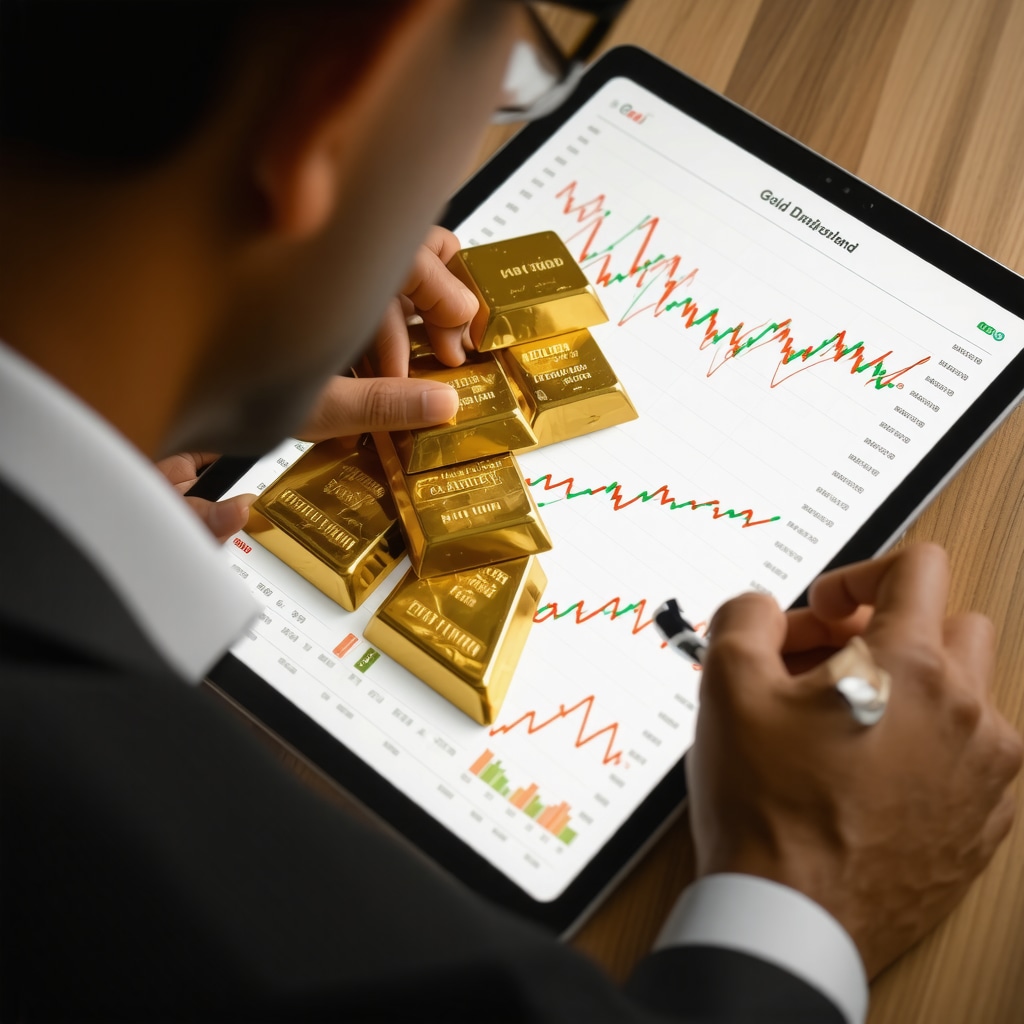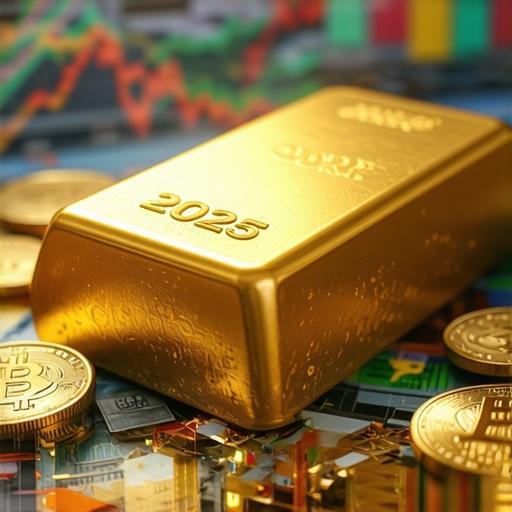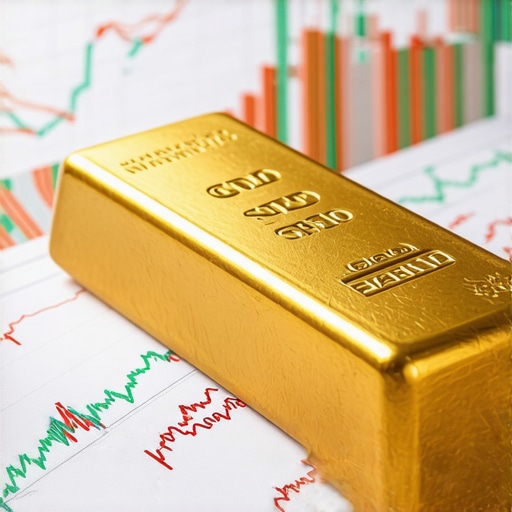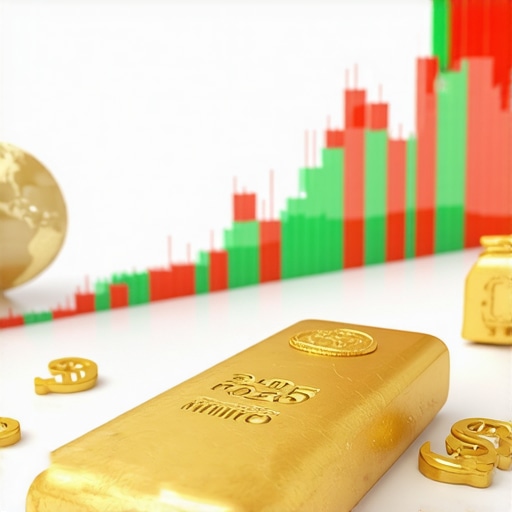Unlocking the Mysteries of Gold Demand: Why It Matters More Than You Think
Gold has captivated human civilization for millennia, not only as a symbol of wealth but as a key player in global economics. For beginners venturing into gold investment, understanding gold demand trends is essential to navigating this complex market. Demand fluctuations influence price dynamics, investment timing, and portfolio strategies, yet the forces driving these shifts are often subtle and multifaceted. This guide illuminates the core factors shaping gold demand, providing you with expert insights to make confident investment decisions.
Beyond the Glitter: The Diverse Drivers of Gold Demand
Gold demand is not monolithic; it arises from varied sectors including jewelry fabrication, investment vehicles, central bank reserves, and industrial uses. Jewelry remains the largest consumer segment globally, especially in countries like India and China, where cultural affinity sustains robust demand. Investment demand, encompassing physical bullion, exchange-traded funds (ETFs), and gold futures, surges during periods of economic uncertainty or inflationary pressures. Central banks also influence demand significantly by adjusting their gold reserves to hedge against currency volatility and geopolitical risks.
How Do Macroeconomic Factors Influence Gold Demand Trends?
Macroeconomic variables such as inflation rates, interest rates, currency strength, and geopolitical stability critically impact gold demand. Inflationary environments often drive investors toward gold as a store of value, perceiving it as a hedge against purchasing power erosion. Conversely, rising real interest rates can dampen gold’s appeal since it yields no interest. Additionally, a weakening U.S. dollar usually boosts gold prices, as gold becomes cheaper for holders of other currencies, thereby stimulating demand. Geopolitical tensions further amplify gold’s safe-haven status, often precipitating rapid demand spikes.
Seasonal and Cultural Nuances: Timing Your Gold Investment
Seasonality plays a surprisingly influential role in gold demand trends. For example, demand typically peaks during festival seasons and wedding periods in key markets such as India, markedly affecting jewelry gold consumption. Recognizing these cyclical patterns can provide investors with tactical advantages, aligning purchase timing with predictable demand surges. Moreover, awareness of cultural trends and emerging markets can reveal growth opportunities that less seasoned investors might overlook.
Expert Tip: Interpreting Gold Demand Data for Smarter Decisions
Reading gold demand statistics requires a nuanced approach. For instance, a rise in ETF holdings signals increased investor interest but may also indicate market anticipation of volatility. Conversely, steady jewelry demand can hint at underlying economic stability or consumer confidence. Combining demand data with supply analysis, such as mining output and recycling rates, offers a comprehensive perspective on market balance and potential price movements. For deeper insights, consider exploring understanding gold supply and demand in today’s economy to grasp how these forces interplay dynamically.
What Are the Key Gold Demand Trends Shaping Market Prices in 2025?
Looking ahead, analysts predict that investment demand will remain robust amid ongoing economic uncertainties and inflation concerns. Central bank gold purchases continue to rise, especially among emerging economies diversifying reserves. Meanwhile, technological advances in electronics and green energy sectors may incrementally increase industrial gold demand. Keeping abreast of these evolving trends is vital for aligning investment strategies with market realities. To stay updated, you might find valuable insights in key gold demand trends shaping market prices in 2025.
Engage With the Community: Share Your Gold Investment Experiences
Whether you are just starting or have years of experience, sharing your observations about gold demand trends enriches collective understanding. Join discussions or comment below to exchange strategies and insights that empower smarter gold investing.
Source: World Gold Council – Gold Demand Trends Research
Reflecting on My Journey with Gold Demand Trends
When I first dipped my toes into gold investing, the sheer complexity of demand factors felt overwhelming. Over time, I realized that understanding the subtle shifts in gold demand isn’t just about numbers — it’s about recognizing patterns that resonate with human behavior, economic cycles, and global events. For instance, witnessing a surge in jewelry purchases during Diwali in India one year helped me appreciate how cultural events can dramatically influence market prices. This personal insight encouraged me to align some of my buying strategies around these seasonal upticks.
How Do Changing Consumer Preferences Shape Gold Jewelry Demand?
One fascinating trend I’ve observed is the evolving taste in gold jewelry, especially among younger generations. While traditional, heavy gold pieces dominate in many cultures, there’s a growing inclination towards lighter, more modern designs or even gold-plated alternatives. This shift impacts overall gold demand, as it may reduce the quantity of physical gold consumed in jewelry but could increase the frequency of purchases. Monitoring these consumer preferences helps me anticipate demand fluctuations more accurately.
What Role Does Technology Play in Gold Investment and Demand?
Technology is reshaping gold demand in ways that weren’t obvious at first glance. For example, the rise of digital gold platforms allows investors to buy fractional gold shares seamlessly, expanding access beyond traditional physical purchases. Additionally, gold’s use in electronics and emerging green technologies contributes to its industrial demand, which although smaller than investment or jewelry segments, is steadily growing. According to the World Gold Council, technology-driven demand contributes significantly to market dynamics and is expected to increase, impacting price trends in the coming years.
Balancing Traditional Wisdom with Modern Investment Tools
Combining my personal experience with trusted data sources has been key. I regularly consult resources like the World Gold Council’s Gold Demand Trends Research to validate my observations with hard facts. This blend of personal insight and expert analysis has helped me craft a balanced portfolio that includes physical gold, ETFs, and mutual funds, adapting to shifting demand and economic conditions. For those looking to diversify, exploring top gold ETFs and mutual funds can be a smart step.
Practical Tips: Timing Your Gold Purchases Amid Demand Fluctuations
From my experience, timing gold purchases around known demand surges — like cultural festivals and economic uncertainty periods — can improve returns. However, it’s equally important to avoid emotional buying during hype phases. Keeping a steady investment plan, while being mindful of seasonal and macroeconomic trends, strikes a nice balance. For beginners, resources like investing in gold for beginners offer practical guidance to start confidently.
How Can You Stay Ahead of Gold Demand Shifts in Your Investment Strategy?
That’s a question I often ask myself and fellow investors. Staying informed through credible research, following market news, and engaging with communities can sharpen your sense of timing and strategy. Also, reflecting on your own experiences and market observations enriches your understanding. I encourage you to share your stories or questions below — let’s learn from each other’s journeys in gold investing.
Decoding the Impact of Geopolitical Shifts on Gold Demand Dynamics
Gold’s role as a strategic asset becomes especially pronounced during periods of geopolitical upheaval. Beyond the typical safe-haven narrative, geopolitical events can disrupt supply chains, alter trade flows, and trigger central bank maneuvers that ripple through global gold demand. For instance, sanctions on major gold-producing countries or trade restrictions can constrict supply, intensifying demand pressures and price volatility. Furthermore, geopolitical alliances often influence central banks’ reserve diversification strategies, with gold serving as a non-sovereign asset shielded from political risks. Investors who grasp these intricate interactions can anticipate market movements that go beyond conventional economic indicators.
Understanding the nuanced relationship between geopolitical developments and gold demand requires monitoring a broad spectrum of signals—from diplomatic tensions and military conflicts to policy shifts and economic sanctions. These factors can swiftly recalibrate market sentiment, prompting rapid reallocations in portfolios toward gold. As such, staying informed through specialized geopolitical risk analysis sources like the Council on Foreign Relations Geopolitics Tracker can provide investors with a strategic edge.
How Can Geopolitical Risk Metrics Be Quantified to Predict Gold Demand Surges?
While geopolitical risk is inherently qualitative, analysts have developed indices like the Geopolitical Risk (GPR) Index that quantify the frequency and intensity of geopolitical events based on media coverage and actual incidents. A rising GPR Index often correlates with spikes in gold demand as investors seek refuge from uncertainty. Integrating such metrics into investment models enables more precise timing of gold acquisitions, mitigating the risks of reactive or emotionally driven decisions. This fusion of qualitative insight and quantitative analysis exemplifies sophisticated gold market engagement.
Innovations in Gold Supply Chain Transparency: Implications for Demand and Ethical Investing
Recent advancements in blockchain technology and digital tracking systems have begun transforming gold supply chain transparency, which is increasingly influencing investor demand—particularly among ethically conscious buyers. These technologies allow verification of gold provenance, ensuring it is conflict-free and mined under environmentally responsible conditions. This transparency not only reassures consumers but also opens new market segments that prioritize sustainability.
The integration of supply chain transparency with consumer and investor preferences reflects a paradigm shift where ethical considerations directly impact demand volumes and price premiums. For investment professionals, recognizing this trend is crucial for constructing portfolios that align financial returns with ESG (Environmental, Social, and Governance) criteria.
What Are the Advanced Technologies Enhancing Gold Traceability and Their Market Impact?
Technologies such as blockchain-enabled digital certificates, RFID tagging, and AI-driven data analytics are revolutionizing gold traceability. These innovations facilitate real-time tracking from mine to market, reduce fraud, and enhance accountability. According to a 2023 report by the Responsible Jewellery Council, implementation of these technologies has led to increased investor confidence and a measurable uptick in demand for certified gold products (Responsible Jewellery Council, 2023).
Harnessing Predictive Analytics for Proactive Gold Demand Strategy Formulation
Predictive analytics, combining big data and machine learning, is emerging as a game-changer in anticipating gold demand shifts. By analyzing multifaceted datasets—including economic indicators, social media sentiment, global event patterns, and transactional data—these models provide forward-looking insights that surpass traditional forecasting methods.
For professional investors, deploying predictive analytics tools means transitioning from reactive to proactive strategies. This approach enhances timing accuracy for entry and exit points, optimizes portfolio allocation across physical and paper gold assets, and mitigates downside risks during volatile periods.
Can Machine Learning Models Accurately Forecast Gold Demand Amid Complex Market Variables?
While no model can claim absolute precision, advanced machine learning algorithms have demonstrated significant improvements in forecasting accuracy by capturing nonlinear relationships and latent variables influencing gold demand. For example, integrating sentiment analysis from financial news and social platforms with macroeconomic data enables nuanced demand projections that account for investor psychology and external shocks.
Leading financial institutions are increasingly investing in these technologies to refine their gold investment strategies. Engaging with cutting-edge research and tools in this area is recommended for those aiming to maintain a competitive advantage.
Invitation to Deepen Your Gold Investment Acumen
Exploring these advanced facets of gold demand empowers you to navigate the market with greater foresight and confidence. I invite you to delve deeper into specialized resources and participate in expert forums dedicated to gold investment analytics. Your journey toward mastery is enriched by continuous learning and community engagement.
Integrating Multifactorial Analytics for Gold Demand Precision
As gold markets evolve, the convergence of multifactorial analytics—including economic indicators, geopolitical risk metrics, and consumer behavior analytics—has become indispensable for sophisticated investors. Employing these integrated analytical frameworks enables a holistic understanding of demand fluctuations, transcending simplistic cause-effect assumptions to reveal complex interdependencies that drive price volatility.
How Can Advanced Analytical Frameworks Enhance Gold Demand Forecasting?
Advanced frameworks utilize machine learning algorithms that synthesize diverse data streams such as macroeconomic trends, social sentiment, geopolitical risk indices, and supply chain transparency metrics. This multidimensional analysis allows for dynamic scenario planning and stress-testing of investment hypotheses, offering a competitive edge in anticipating demand surges or contractions. For instance, combining the Geopolitical Risk (GPR) Index with blockchain-verified supply data can refine timing strategies by correlating supply disruptions with heightened safe-haven demand.
Ethical Investment Paradigms: The Rising Influence on Gold Demand
Investor preferences are increasingly aligning with ESG principles, prioritizing ethical sourcing and sustainability in precious metals procurement. This shift impacts demand patterns, as certified conflict-free and environmentally responsible gold commands premiums and attracts capital from funds with strict ESG mandates. Recognizing this, mining operations and refiners are adopting transparency-enhancing technologies to meet these evolving expectations.
The Responsible Jewellery Council’s 2023 report highlights that transparency technologies not only mitigate reputational risks but also stimulate demand among conscientious investors (Responsible Jewellery Council, 2023).
Geopolitical Intelligence and Gold: Navigating Uncertainty with Quantified Risk Metrics
Geopolitical tension remains a pivotal variable influencing gold demand volatility. By leveraging quantified risk metrics like the GPR Index and real-time geopolitical event tracking through platforms such as the Council on Foreign Relations Geopolitics Tracker, investors can anticipate demand shifts well ahead of market consensus. These intelligence tools facilitate preemptive portfolio adjustments, mitigating exposure to sudden market disruptions and capitalizing on safe-haven inflows.
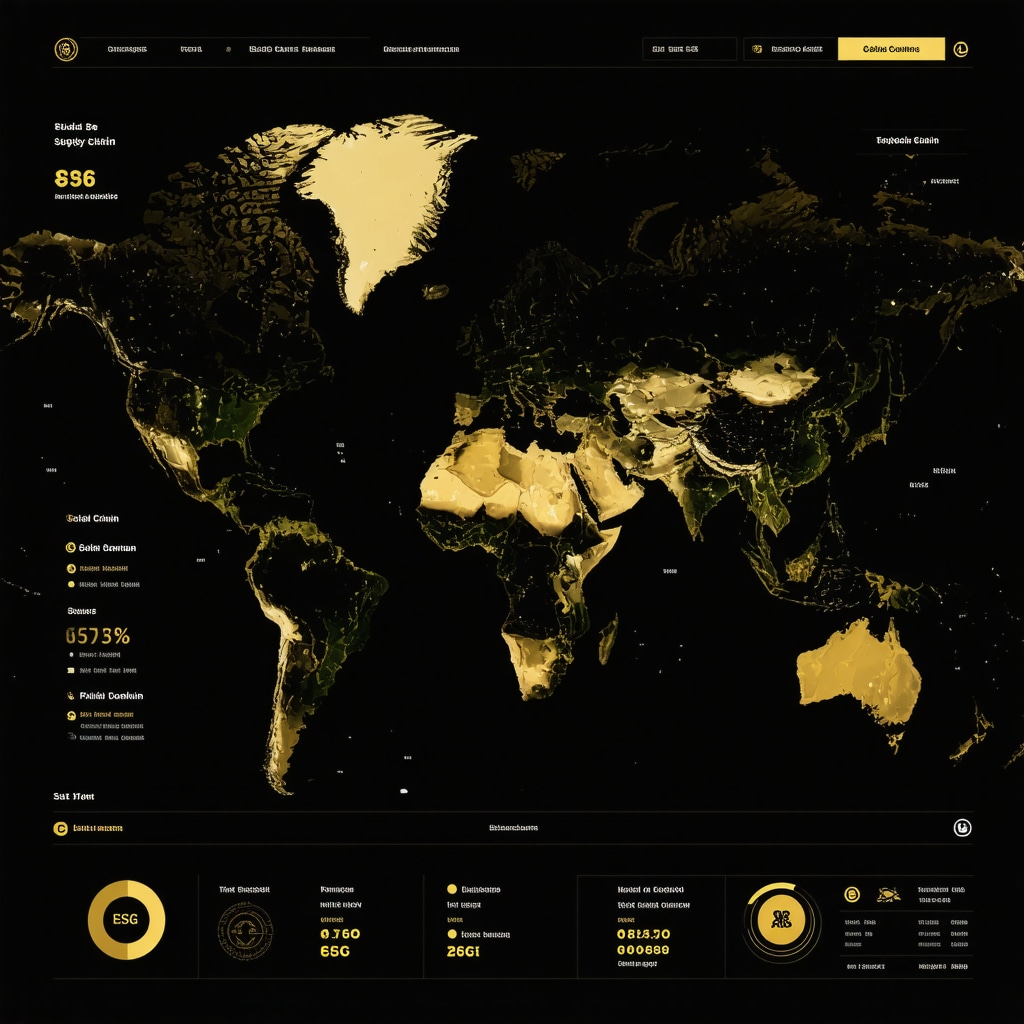
What Are the Practical Steps to Implement Geopolitical Risk Analytics in Gold Investment Strategies?
Implementing geopolitical risk analytics involves continuous monitoring of risk indices, integrating these data points with traditional economic indicators and predictive analytics. Investors should establish thresholds for risk escalation that trigger tactical portfolio rebalancing, such as increasing allocations to physical gold or gold ETFs during periods of heightened geopolitical uncertainty. Utilizing AI-powered platforms that aggregate and interpret geopolitical news can enhance decision-making speed and accuracy, enabling more informed responses to evolving global dynamics.
Call to Action: Elevate Your Gold Investment Strategy Today
Harnessing advanced analytics, ethical investment trends, and geopolitical intelligence is no longer optional but essential for mastering gold demand dynamics. I encourage you to explore these tools, deepen your analytical capabilities, and engage with expert communities to transform your gold investment approach. Stay ahead of market shifts by integrating cutting-edge research and technology into your strategy—your portfolio deserves this level of sophistication.
Frequently Asked Questions (FAQ)
What are the primary factors driving fluctuations in gold demand?
Gold demand is influenced by a complex interplay of factors including macroeconomic variables like inflation and interest rates, geopolitical tensions, cultural and seasonal buying patterns, central bank reserve policies, and evolving consumer preferences in jewelry and technology sectors. Understanding these multifactorial drivers is essential to anticipate demand shifts effectively.
How does geopolitical risk affect gold prices and demand?
Geopolitical risk elevates gold’s status as a safe-haven asset. Events such as conflicts, sanctions, or diplomatic tensions can disrupt supply chains and increase uncertainty, prompting investors and central banks to increase gold holdings. Quantitative measures like the Geopolitical Risk (GPR) Index help track such risks and often correlate with spikes in gold demand and prices.
Can predictive analytics and machine learning improve gold demand forecasting?
Yes. Advanced predictive models using machine learning integrate diverse data sources—economic indicators, social sentiment, geopolitical metrics—to capture complex, nonlinear relationships influencing gold demand. While not infallible, these tools enhance forecasting accuracy and enable proactive investment decisions that outperform traditional methods.
What role does ethical sourcing play in modern gold demand?
Ethical investment paradigms increasingly influence gold demand, with investors favoring conflict-free and environmentally responsible gold. Technologies like blockchain and RFID ensure provenance transparency, boosting investor confidence and often commanding price premiums. This trend aligns gold investment with ESG criteria, expanding demand among conscientious buyers.
How do seasonal and cultural factors impact gold buying patterns?
In markets such as India and China, cultural festivals and wedding seasons trigger predictable surges in jewelry gold demand. Recognizing these seasonal patterns allows investors to time purchases strategically, capitalizing on price movements driven by heightened consumer activity.
Why is central bank gold purchasing significant for market dynamics?
Central banks hold gold to diversify reserves and hedge against currency and geopolitical risks. Their buying or selling activities can materially affect global gold demand and price trends, especially as emerging economies increase gold allocations to reduce dependency on fiat currencies.
How can investors balance traditional gold investment wisdom with modern tools?
Successful gold investing combines understanding historical demand drivers like jewelry and safe-haven demand with leveraging modern instruments such as ETFs and digital gold platforms. Incorporating data analytics, geopolitical intelligence, and ethical sourcing insights fosters a well-rounded, adaptive strategy.
What are the emerging industrial uses of gold affecting demand?
Beyond jewelry and investment, gold’s applications in electronics, medical devices, and green technologies contribute to its industrial demand. Though smaller in volume compared to other sectors, this demand is growing steadily and influences long-term market fundamentals.
Trusted External Sources
1. World Gold Council (WGC): As the leading authority on gold market data, WGC provides comprehensive research on gold demand trends, investment statistics, and supply dynamics, essential for informed market analysis.
2. Responsible Jewellery Council (RJC): Offers in-depth reports on sustainability and technology advancements in gold traceability, crucial for understanding ethical investment impacts on demand.
3. Council on Foreign Relations (CFR) Geopolitics Tracker: Provides real-time geopolitical risk assessments and indices like the GPR Index, enabling investors to quantify geopolitical influences on gold markets.
4. Financial institutions’ research publications (e.g., Goldman Sachs, JP Morgan): These offer cutting-edge analyses incorporating predictive analytics and machine learning applications in commodity forecasting, including gold.
5. Academic journals on commodity markets and economics: Peer-reviewed studies provide rigorous quantitative and qualitative insights into gold demand determinants and forecasting methodologies.
Conclusion
Mastering the nuances of gold demand requires a deep appreciation of its multifaceted drivers—from macroeconomic forces and geopolitical risks to cultural patterns and ethical considerations. This expert overview underscores how integrating advanced analytics, transparency technologies, and geopolitical intelligence can empower investors to anticipate market shifts with greater precision. By balancing traditional wisdom with modern tools, and staying attuned to evolving demand trends, one can craft resilient gold investment strategies that navigate complexity and capitalize on opportunity. We invite you to share your insights, engage with expert communities, and apply these informed perspectives to elevate your gold investment journey.






